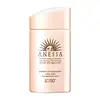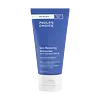What's inside
What's inside
 Key Ingredients
Key Ingredients

 Benefits
Benefits

 Concerns
Concerns

 Ingredients Side-by-side
Ingredients Side-by-side

Water
Skin ConditioningDimethicone
EmollientDiisopropyl Sebacate
EmollientButylene Glycol
HumectantCaprylyl Methicone
Skin ConditioningCetyl Ethylhexanoate
EmollientTitanium Dioxide
Cosmetic ColorantPentaerythrityl Tetraethylhexanoate
EmollientTriethylhexanoin
MaskingDiethylhexyl Succinate
EmollientZinc Oxide
Cosmetic ColorantDipropylene Glycol
HumectantSilica
AbrasiveGlycerin
HumectantPEG-9 Polydimethylsiloxyethyl Dimethicone
EmulsifyingDiethylamino Hydroxybenzoyl Hexyl Benzoate
UV FilterBis-Ethylhexyloxyphenol Methoxyphenyl Triazine
Skin ConditioningPEG/PPG-14/7 Dimethyl Ether
Skin ConditioningSodium Chloride
MaskingThiotaurine
AntioxidantPotentilla Erecta Root Extract
Skin ConditioningDipotassium Glycyrrhizate
HumectantAngelica Keiskei Leaf/Stem Extract
Skin ConditioningSodium Acetylated Hyaluronate
HumectantPEG-10 Dimethicone
Skin ConditioningAluminum Hydroxide
EmollientDisteardimonium Hectorite
StabilisingEthylhexyl Triazone
UV AbsorberPEG-12 Dimethicone
Skin ConditioningStearic Acid
CleansingHydrogen Dimethicone
Beheneth-20
EmulsifyingSodium Citrate
BufferingCitric Acid
BufferingSodium Metaphosphate
BufferingSodium Metabisulfite
AntioxidantPrunus Yedoensis Leaf Extract
Skin ConditioningCarbomer
Emulsion StabilisingTrifluoropropyldimethyl/Trimethylsiloxysilicate
EmollientTocopherol
AntioxidantPhenoxyethanol
PreservativeBenzoic Acid
MaskingCI 77120
Cosmetic ColorantWater, Dimethicone, Diisopropyl Sebacate, Butylene Glycol, Caprylyl Methicone, Cetyl Ethylhexanoate, Titanium Dioxide, Pentaerythrityl Tetraethylhexanoate, Triethylhexanoin, Diethylhexyl Succinate, Zinc Oxide, Dipropylene Glycol, Silica, Glycerin, PEG-9 Polydimethylsiloxyethyl Dimethicone, Diethylamino Hydroxybenzoyl Hexyl Benzoate, Bis-Ethylhexyloxyphenol Methoxyphenyl Triazine, PEG/PPG-14/7 Dimethyl Ether, Sodium Chloride, Thiotaurine, Potentilla Erecta Root Extract, Dipotassium Glycyrrhizate, Angelica Keiskei Leaf/Stem Extract, Sodium Acetylated Hyaluronate, PEG-10 Dimethicone, Aluminum Hydroxide, Disteardimonium Hectorite, Ethylhexyl Triazone, PEG-12 Dimethicone, Stearic Acid, Hydrogen Dimethicone, Beheneth-20, Sodium Citrate, Citric Acid, Sodium Metaphosphate, Sodium Metabisulfite, Prunus Yedoensis Leaf Extract, Carbomer, Trifluoropropyldimethyl/Trimethylsiloxysilicate, Tocopherol, Phenoxyethanol, Benzoic Acid, CI 77120
Butyl Methoxydibenzoylmethane 3%
UV AbsorberHomosalate 5%
Skin ConditioningEthylhexyl Methoxycinnamate 7.5%
UV AbsorberEthylhexyl Salicylate 5%
UV AbsorberBenzophenone-3
UV AbsorberWater
Skin ConditioningSilica
AbrasiveGlycerin
HumectantCetearyl Alcohol
EmollientDimethicone
EmollientButylene Glycol
HumectantPentylene Glycol
Skin ConditioningPotassium Cetyl Phosphate
EmulsifyingCyclopentasiloxane
EmollientPyrus Malus Fruit Extract
Skin ConditioningVp/Eicosene Copolymer
Butyrospermum Parkii Butter
Skin ConditioningAllantoin
Skin ConditioningNiacinamide
SmoothingTocopherol
AntioxidantGlycyrrhiza Glabra Root Extract
BleachingAloe Barbadensis Leaf Juice
Skin ConditioningAtractylodes Macrocephala Root Powder
HumectantAvena Sativa Kernel Extract
AbrasiveCoffea Arabica Seed Extract
MaskingPortulaca Oleracea Extract
Skin ConditioningMahonia Aquifolium Root Extract
AstringentDiethylhexyl Syringylidenemalonate
Skin ProtectingSarcosine
Skin ConditioningCapryloyl Glycine
CleansingMaltooligosyl Glucoside
Skin ConditioningCetearyl Glucoside
EmulsifyingDimethiconol
EmollientAcrylates/C10-30 Alkyl Acrylate Crosspolymer
Emulsion StabilisingHydrogenated Starch Hydrolysate
HumectantHexylene Glycol
Emulsifying4-T-Butylcyclohexanol
MaskingGlyceryl Stearate
EmollientPEG-100 Stearate
Sodium Hydroxide
BufferingXanthan Gum
EmulsifyingDisodium EDTA
Phenoxyethanol
PreservativeCaprylyl Glycol
EmollientEthylhexylglycerin
Skin ConditioningButyl Methoxydibenzoylmethane 3%, Homosalate 5%, Ethylhexyl Methoxycinnamate 7.5%, Ethylhexyl Salicylate 5%, Benzophenone-3, Water, Silica, Glycerin, Cetearyl Alcohol, Dimethicone, Butylene Glycol, Pentylene Glycol, Potassium Cetyl Phosphate, Cyclopentasiloxane, Pyrus Malus Fruit Extract, Vp/Eicosene Copolymer, Butyrospermum Parkii Butter, Allantoin, Niacinamide, Tocopherol, Glycyrrhiza Glabra Root Extract, Aloe Barbadensis Leaf Juice, Atractylodes Macrocephala Root Powder, Avena Sativa Kernel Extract, Coffea Arabica Seed Extract, Portulaca Oleracea Extract, Mahonia Aquifolium Root Extract, Diethylhexyl Syringylidenemalonate, Sarcosine, Capryloyl Glycine, Maltooligosyl Glucoside, Cetearyl Glucoside, Dimethiconol, Acrylates/C10-30 Alkyl Acrylate Crosspolymer, Hydrogenated Starch Hydrolysate, Hexylene Glycol, 4-T-Butylcyclohexanol, Glyceryl Stearate, PEG-100 Stearate, Sodium Hydroxide, Xanthan Gum, Disodium EDTA, Phenoxyethanol, Caprylyl Glycol, Ethylhexylglycerin
 Reviews
Reviews

Ingredients Explained
These ingredients are found in both products.
Ingredients higher up in an ingredient list are typically present in a larger amount.
Butylene Glycol (or BG) is used within cosmetic products for a few different reasons:
Overall, Butylene Glycol is a safe and well-rounded ingredient that works well with other ingredients.
Though this ingredient works well with most skin types, some people with sensitive skin may experience a reaction such as allergic rashes, closed comedones, or itchiness.
Learn more about Butylene GlycolDimethicone is a type of synthetic silicone created from natural materials such as quartz.
What it does:
Dimethicone comes in different viscosities:
Depending on the viscosity, dimethicone has different properties.
Ingredients lists don't always show which type is used, so we recommend reaching out to the brand if you have questions about the viscosity.
This ingredient is unlikely to cause irritation because it does not get absorbed into skin. However, people with silicone allergies should be careful about using this ingredient.
Note: Dimethicone may contribute to pilling. This is because it is not oil or water soluble, so pilling may occur when layered with products. When mixed with heavy oils in a formula, the outcome is also quite greasy.
Learn more about DimethiconeGlycerin is already naturally found in your skin. It helps moisturize and protect your skin.
A study from 2016 found glycerin to be more effective as a humectant than AHAs and hyaluronic acid.
As a humectant, it helps the skin stay hydrated by pulling moisture to your skin. The low molecular weight of glycerin allows it to pull moisture into the deeper layers of your skin.
Hydrated skin improves your skin barrier; Your skin barrier helps protect against irritants and bacteria.
Glycerin has also been found to have antimicrobial and antiviral properties. Due to these properties, glycerin is often used in wound and burn treatments.
In cosmetics, glycerin is usually derived from plants such as soybean or palm. However, it can also be sourced from animals, such as tallow or animal fat.
This ingredient is organic, colorless, odorless, and non-toxic.
Glycerin is the name for this ingredient in American English. British English uses Glycerol/Glycerine.
Learn more about GlycerinPhenoxyethanol is a preservative that has germicide, antimicrobial, and aromatic properties. Studies show that phenoxyethanol can prevent microbial growth. By itself, it has a scent that is similar to that of a rose.
It's often used in formulations along with Caprylyl Glycol to preserve the shelf life of products.
Silica, also known as silicon dioxide, is a naturally occurring mineral. It is used as a fine, spherical, and porous powder in cosmetics.
Though it has exfoliant properties, the function of silica varies depending on the product.
The unique structure of silica enhances the spreadability and adds smoothness, making it a great texture enhancer.
It is also used as an active carrier, emulsifier, and mattifier due to its ability to absorb excess oil.
In some products, tiny microneedles called spicules are made from silica or hydrolyzed sponge. When you rub them in, they lightly polish away dead skin layers and enhance the penetration of active ingredients.
Learn more about SilicaTocopherol (also known as Vitamin E) is a common antioxidant used to help protect the skin from free-radicals and strengthen the skin barrier. It's also fat soluble - this means our skin is great at absorbing it.
Vitamin E also helps keep your natural skin lipids healthy. Your lipid skin barrier naturally consists of lipids, ceramides, and fatty acids. Vitamin E offers extra protection for your skin’s lipid barrier, keeping your skin healthy and nourished.
Another benefit is a bit of UV protection. Vitamin E helps reduce the damage caused by UVB rays. (It should not replace your sunscreen). Combining it with Vitamin C can decrease sunburned cells and hyperpigmentation after UV exposure.
You might have noticed Vitamin E + C often paired together. This is because it is great at stabilizing Vitamin C. Using the two together helps increase the effectiveness of both ingredients.
There are often claims that Vitamin E can reduce/prevent scarring, but these claims haven't been confirmed by scientific research.
Learn more about TocopherolWater. It's the most common cosmetic ingredient of all. You'll usually see it at the top of ingredient lists, meaning that it makes up the largest part of the product.
So why is it so popular? Water most often acts as a solvent - this means that it helps dissolve other ingredients into the formulation.
You'll also recognize water as that liquid we all need to stay alive. If you see this, drink a glass of water. Stay hydrated!
Learn more about Water